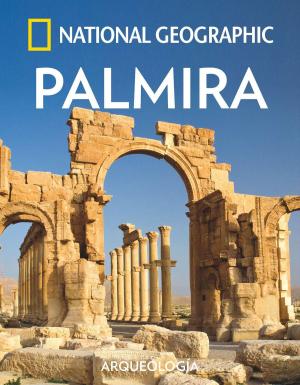Pilgrimage, Sciences and Sufism: Islamic Art in the West Bank and Gaza
Nonfiction, Art & Architecture, General Art, Travel, History| Author: | Mahmoud Hawari, Yusuf Natsheh, Nazmi al-Ju'beh, Marwan Abu Khalaf, Mu'en Sadeq | ISBN: | 9783902782113 |
| Publisher: | Museum With No Frontiers, MWNF (Museum Ohne Grenzen) | Publication: | December 15, 2009 |
| Imprint: | Language: | English |
| Author: | Mahmoud Hawari, Yusuf Natsheh, Nazmi al-Ju'beh, Marwan Abu Khalaf, Mu'en Sadeq |
| ISBN: | 9783902782113 |
| Publisher: | Museum With No Frontiers, MWNF (Museum Ohne Grenzen) |
| Publication: | December 15, 2009 |
| Imprint: | |
| Language: | English |
Throughout its entire history, Palestine has witnessed on its territory the convergence of the great Middle Eastern cultures. Besides the obvious destruction and devastation, this convergence enriched the region with highly evolved cultural traditions to ensure a glowing reputation that spread to the outer edges of the new Muslim order. For the faithful undertaking the hadj Palestine rapidly became a sacred destination, which sanctified the pilgrimage to Mecca. Under the Ayyubid, Mamluk and Ottoman dynasties, influxes of pilgrims poured into Palestine to visit Jerusalem and its Haram al-Sharif the ‘Noble Holy Site’. In this climate of active religiousness, it is not surprising that Palestine became one of the most prestigious centres for learning in the Muslim world. The most eminent erudites came to teach in the al-Asqa Mosque, men of letters whose reputation spanned the whole of the Islamic world devoted themselves with passion to the art of debate, exegesis and rhetoric. Hundreds of madrasas were built in Jerusalem, Hebron, Nablus, Gaza and Zefat, the Haram al-Sharif alone may have accommodated up to 360 masters of different disciplines. These allowed for the decisive launch of Sufic philosophy, while, concurrently, promoting healthy economic activity galvanised by the continuous meetings of scholars and the faithful. Thousands of monumental tombs, mosques, zawiyas and caravanserais were built. To the enormous benefit of art history, these allocations, which, under the Ottoman Empire, were granted as far as Asia, Europe and Africa, have also guaranteed, in the long term, the upkeep and conservation of an impressive architectural heritage. It is thus that in this most modest geographic area, a sumptuous heritage transforms the country into an amazing architectural museum, where the entire panorama of Islamic styles is still present today.
Throughout its entire history, Palestine has witnessed on its territory the convergence of the great Middle Eastern cultures. Besides the obvious destruction and devastation, this convergence enriched the region with highly evolved cultural traditions to ensure a glowing reputation that spread to the outer edges of the new Muslim order. For the faithful undertaking the hadj Palestine rapidly became a sacred destination, which sanctified the pilgrimage to Mecca. Under the Ayyubid, Mamluk and Ottoman dynasties, influxes of pilgrims poured into Palestine to visit Jerusalem and its Haram al-Sharif the ‘Noble Holy Site’. In this climate of active religiousness, it is not surprising that Palestine became one of the most prestigious centres for learning in the Muslim world. The most eminent erudites came to teach in the al-Asqa Mosque, men of letters whose reputation spanned the whole of the Islamic world devoted themselves with passion to the art of debate, exegesis and rhetoric. Hundreds of madrasas were built in Jerusalem, Hebron, Nablus, Gaza and Zefat, the Haram al-Sharif alone may have accommodated up to 360 masters of different disciplines. These allowed for the decisive launch of Sufic philosophy, while, concurrently, promoting healthy economic activity galvanised by the continuous meetings of scholars and the faithful. Thousands of monumental tombs, mosques, zawiyas and caravanserais were built. To the enormous benefit of art history, these allocations, which, under the Ottoman Empire, were granted as far as Asia, Europe and Africa, have also guaranteed, in the long term, the upkeep and conservation of an impressive architectural heritage. It is thus that in this most modest geographic area, a sumptuous heritage transforms the country into an amazing architectural museum, where the entire panorama of Islamic styles is still present today.















